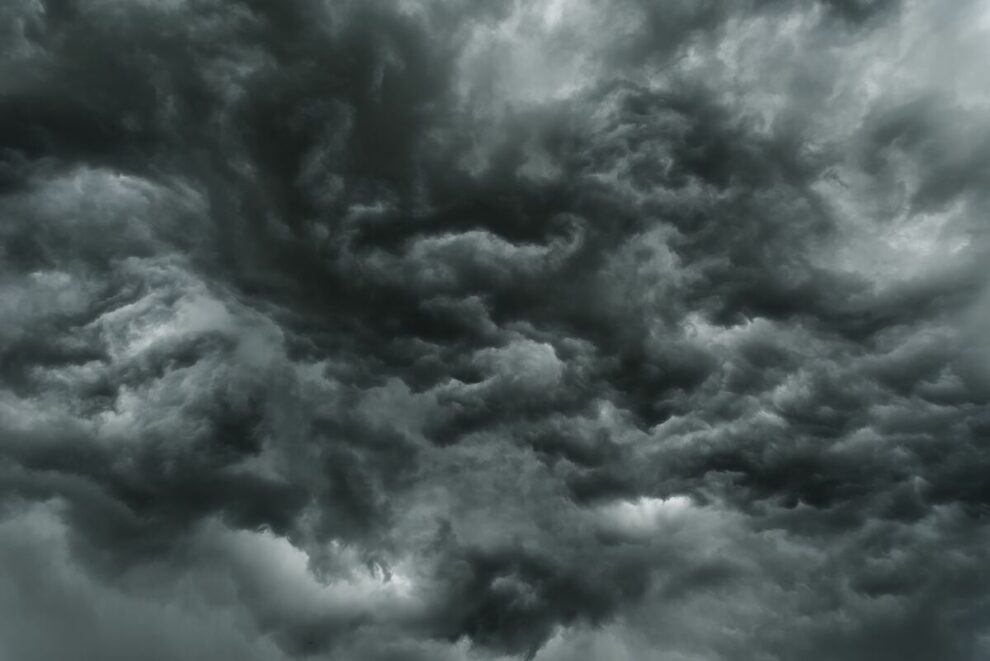Or at least back to 1970. And only considering hurricanes that made landfall. Roger Pielke Jr. and Ryan Maue have written a summary on the 2024 hurricane season, when there were 11 major landfalling tropical cyclones, the highest number on record. Which can only mean one thing. Or not. Because the total number of hurricanes, including minor ones, while high, was only third highest since 1970 (the highest was in 1971). And the number of minor hurricanes has been declining slightly. And despite any alarmist tilt the IPCC has, on the topic of tropical cyclones Pielke Jr. and Maue note that the IPCC denies current data indicates global hurricane activity is changing, let alone being changed by greenhouse gases.
Pielke Jr. and Maue’s piece starts out:
“Last year the world experienced the most major hurricane landfalls since records are available, tying only 2015, with 11 storms.”
And then it proceeds to do something you wouldn’t think was unusual but these days is, on this file particularly. They take a fair-minded look at the data:
“Does last year indicate that we have reached a new climate-fueled normal? Let’s have a look.”
Let’s. The piece notes that 2024:
“was a very active year for landfalling tropical cyclones of hurricane strength – with 24 total landfalls (S/S Category 1+), 11 of which were major hurricanes (S/S Category 3+). In fact, 2024 saw the third most landfalls around the world of any year since 1970, trailing only 1971 (30) and 1996 (25)”.
But note that we’re only talking since 1970, because it’s the period after which “[g]lobally consistent data is available”. So if hurricanes fluctuate within a stable range but over longer periods than 50 years, noise might look like a trend. Or not since 1971, 1996 and 2024 could reasonably be taken for a random distribution, and 1971 was the peak year.
In addition to charting the number of years that have seen different numbers of landfalls, which generate something vaguely like bell charts, they also do a trend for Categories 1 and 2 from 1970 to 2024, those being the least ferocious, and also of Categories 3-5. And what you get is a very gentle decline in the former and a stronger upward trend in 3+. As they ask:
“Does the upwards trend since 1970 reflect a change in the global statistics of tropical cyclones – and thus a change in climate? And, if so, is that change a result of the emissions of carbon dioxide?”
And then they don’t answer. At least not personally. Instead they go to the oracle of climate doom, at least to hear most journalists tell it:
“The IPCC AR6 answers no and no: ‘There is low confidence in most reported long-term (multidecadal to centennial) trends in TC frequency- or intensity-based metrics…’”
And remember that in the weird language of the IPCC, “low confidence” doesn’t mean gosh, we’re really not sure. It means it’s less likely than not.
If alarmists are tempted to cry “Et tu, IPCC?” over this answer, RPJ and Maue go on to explain that it’s based on data. For starters, we do have good consistent data going back before 1970 for some ocean basins, and what they show is essentially a flatline in the Western North Pacific and North Atlantic, which between them account for over 2/3 of global landfalls, and show first that the trendlines are nearly flat for both minor and major storms, and also that the 1970s were a period of unusual calm at least since 1950. So as with measuring Arctic ice from 1979, it’s a good place to start if you want to raise a ruckus but not so good if you want to do science.
And indeed that “study says” cited above includes that:
“Over the next decade, it projected tropical cyclone numbers in the Atlantic could more than double compared to 1970s levels, while East Pacific activity could increase by more than a third.”
On which we say, in addition to “We’ll believe it when we see it not when your computer program hallucinates it because you told it to” that if 1970s levels were unusually low, it’s an uninteresting bet as well as a safe one.
The second key point is that tropical cyclone landfalls exhibit high variability. And as everybody knows who cares to, the greater the variability, the harder it is to separate noise from signal and the longer the time series you need to develop even medium confidence about a trend.
Finally, the notion that major storms are surging proving a crisis and so forth is undermined by the fact that the trend for “Accumulated Cyclonic Energy” or total destructive horribleness of all storms in a year combined seems to be “flat as a pancake”.



Truncating data before 1970 is bad science
U.S. HURRICANES MAKING LANDFALL HAVE BEEN IN A DOWNTREND SINCE THE LATE 1800s. ... JAPAN TYPHOONs MAKING LANDFALL HAVE BEEN IN A DOWNTREND SINCE THE MID-1950s